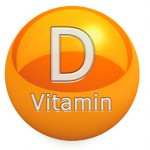“However, these results highlight the central causal role of low bone mineral density in the pathophysiology of fracture risk,” they conclude.
“Our research confirms that BMD is the most important determinant of fracture risk and that prevention strategies aimed at increasing or maintaining bone density are the most likely to be successful,” Dr. Richards said in the news release.
“One of the most important aspects of this research is the robust evidence showing that vitamin D supplementation in the general population is unlikely to be effective for the prevention of fracture. This will encourage clinicians to focus patients on building bone density as a more effective preventive measure against fracture,” said Dr. Richards.
The study was funded primarily by the European Commission. Several authors reported financial relationships with various companies including Zoll LifeCor, Johnson & Johnson, AstraZeneca, Eli Lilly, Amgen, UCB, Ultragenyx, Novartis, Biogen, deCODE genetics and 23andMe.
Reference
- Trajanoska K, Morris JA, Oei L et al. Assessment of the genetic and clinical determinants of fracture risk: genome wide association and mendelian randomisation study. BMJ. 2018 Aug 29;362:k3225.
